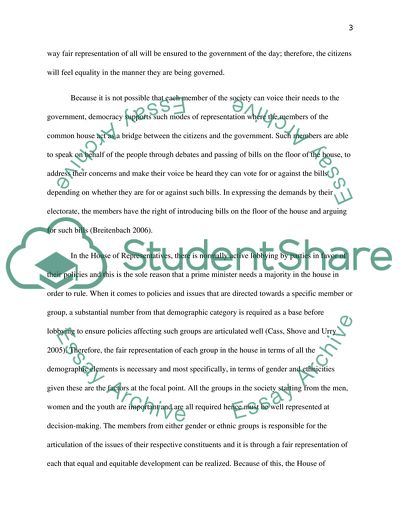Cite this document
(Fair and Equal Representation in the House of Commons Essay Example | Topics and Well Written Essays - 2000 words - 3, n.d.)
Fair and Equal Representation in the House of Commons Essay Example | Topics and Well Written Essays - 2000 words - 3. https://studentshare.org/history/1796376-how-representative-is-the-house-of-commons-in-terms-of-gender-and-ethnicity
Fair and Equal Representation in the House of Commons Essay Example | Topics and Well Written Essays - 2000 words - 3. https://studentshare.org/history/1796376-how-representative-is-the-house-of-commons-in-terms-of-gender-and-ethnicity
(Fair and Equal Representation in the House of Commons Essay Example | Topics and Well Written Essays - 2000 Words - 3)
Fair and Equal Representation in the House of Commons Essay Example | Topics and Well Written Essays - 2000 Words - 3. https://studentshare.org/history/1796376-how-representative-is-the-house-of-commons-in-terms-of-gender-and-ethnicity.
Fair and Equal Representation in the House of Commons Essay Example | Topics and Well Written Essays - 2000 Words - 3. https://studentshare.org/history/1796376-how-representative-is-the-house-of-commons-in-terms-of-gender-and-ethnicity.
“Fair and Equal Representation in the House of Commons Essay Example | Topics and Well Written Essays - 2000 Words - 3”. https://studentshare.org/history/1796376-how-representative-is-the-house-of-commons-in-terms-of-gender-and-ethnicity.


